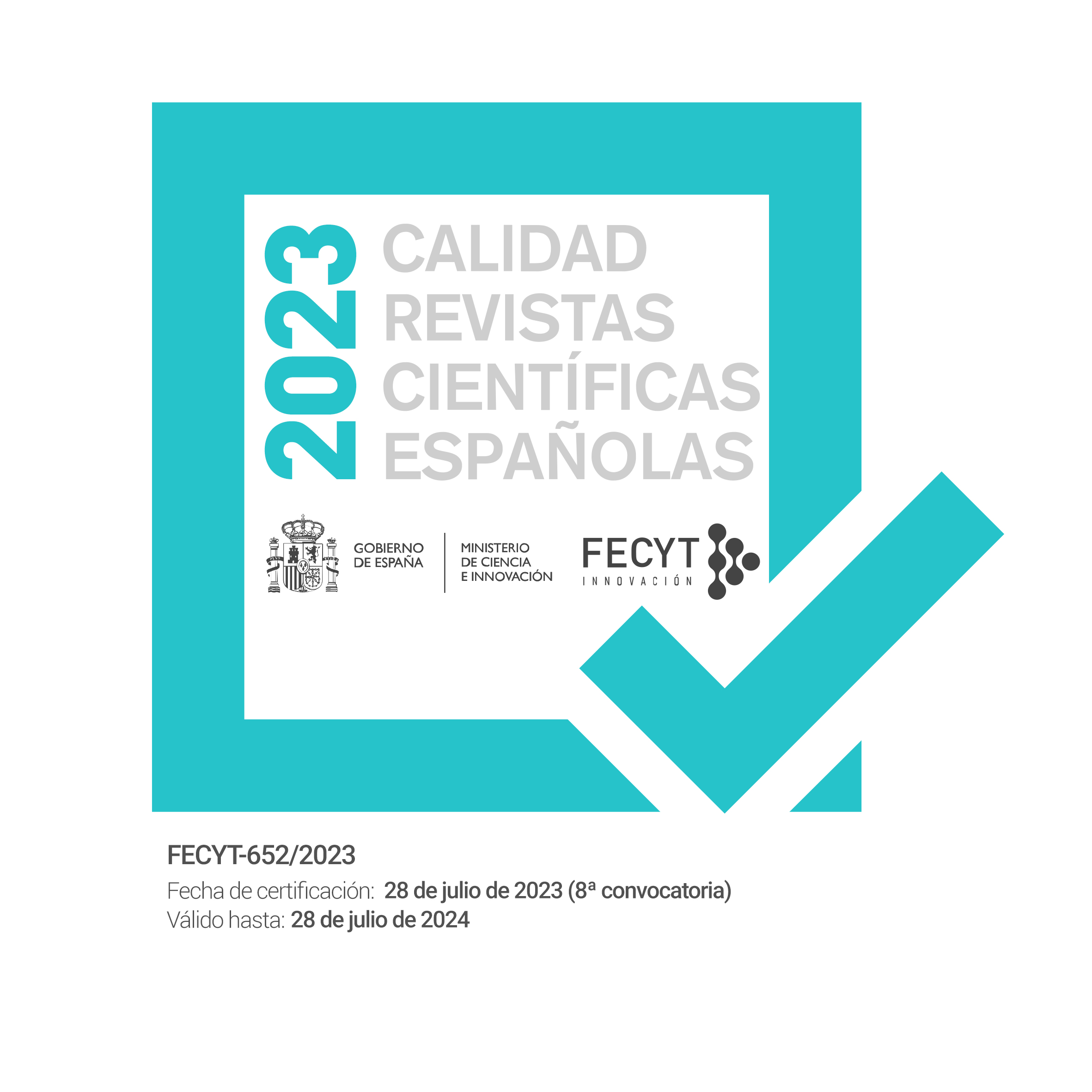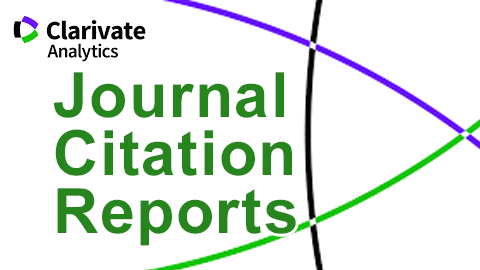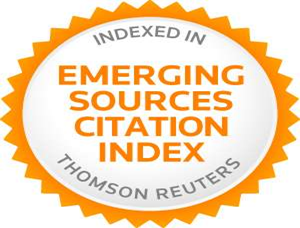L2 Vocabulary Learning and Linguistic Mediation: Working with Phrasal Verbs through Mediation Activities
Abstract
Abstract
The latest version of the Common European Framework of Reference for Languages (2018) remarks linguistic mediation as one of the communicative skills to be developed by foreign language learners. In this paper, two groups of secondary education students of English as a Second Language work on several phrasal verbs through different activities. One of the groups uses mediation activities, while the other group works with other more traditional classroom activities. After the intervention, students were evaluated on both receptive and productive acquisition of these verbs. The results show that, although no significant differences in productive knowledge were found, the group that had worked with mediation activities did obtain better results in their receptive knowledge of those terms. This suggests that mediation, in addition to its value in itself as a skill within the communicative competence, may have a relevant role in the development of other aspects within L2 learning.
Keywords: linguistic mediation; English as a Foreign Language; vocabulary learning; secondary education.
Resumen
La última versión del Marco Común Europeo para las Lenguas (2018) menciona la mediación lingüística como una de las destrezas comunicativas que tienen que desarrollar los aprendices de segunda lengua. En este artículo dos grupos de estudiantes de inglés en educación secundaria trabajan una serie de verbos frasales a través de diferentes actividades. Uno de los grupos lo hace a través de actividades de mediación, mientras el otro lo hace a través de actividades más tradicionales. Tras la intervención, los estudiantes fueron evaluados tanto en el conocimiento receptivo como en el productivo de estos verbos. Los resultados muestran que, si bien no se encontraron diferencias significativas en el conocimiento productivo, sí se encontraron en el receptivo a favor del grupo que trabajó con actividades de mediación. Esto sugiere que la mediación, además de su valor en sí misma para la competencia comunicativa, puede jugar un papel relevante en el desarrollo de otros aspectos dentro del aprendizaje de una segunda lengua.
Palabras clave: mediación lingüística; inglés como lengua extranjera; aprendizaje de vocabulario; educación secundaria.
References
Alcaraz-Mármol, G. (2019). Desarrollo de la competencia oral en inglés como lengua extranjera a través de la mediación lingüística en educación secundaria. Estudios de Lingüística Inglesa Aplicada, 19, 15-40. doi: 10.12795/elia.2019.i19.02
Alcaraz-Mármol, G. & Almela, Á. (2013). The bilingual dictionary and foreign language learning: Facts and opinions. Porta Linguarum, 20, 89-101.
Anderson, L. & Krathwohl, D. (2000). A Taxonomy for Learning, Teaching, and Assessing: A Revision of Bloom's Taxonomy of Educational Objectives. New York: Pearson.
Blini, L. (2008). Mediazione linguistica: riflessioni su una denominazione. Rivista internazionale di tecnica della traduzione, 10, 123-138.
Blini, L. (2009). La mediación lingüística en España e Italia: difusión de un concepto problemático. Entreculturas, 1, 45-60.
Campos, G. (2004). O que é tradução. São Paulo: Editora Brasiliense.
Cantero, F. J. & De Arriba, C. (2004). La mediación lingüística en la enseñanza de lenguas. DiLL. Didáctica. Lengua y Literatura, 16, 9-21.
Carreras i Goicoechea, M. & Pérez Vázquez, E. (2010). La mediación lingüística y cultural y su didáctica. Bolonia: Bolonia University Press.
Cassany, D. (1996). La mediación lingüística ¿Una nueva profesión? Terminómetro, 2 [Número especial: La terminología en España], 62-63.
Council of Europe (2002). Common European Framework of Languages. Retrieved from https://rm.coe.int/16802fc1bf
Council of Europe (2018). Companion Volume with New Descriptors. Retrieved from https://rm.coe.int/cefr-companion-volume-with-new-descriptors-2018/1680787989
De Arriba García, C. (2003). La mediación lingüística en la enseñanza de lenguas extranjeras. PhD dissertation, University of Barcelona, Spain.
Dehkordi, M. R. & Shafiee, S. (2016). The effect of triple blank filling and summary writing exercises on learning L2 vocabulary meaning, form, and use. Journal of Applied Linguistics and Language Research 3(5), 69-82.
Gorman, B. (2012). Relationships between vocabulary size, working memory and phonological awareness in Spanish-speaking English language learners. American Journal of Speech-Language pathology, 21, 109-123. doi: 10.1044/1058-0360(2011/10-0063)
Harrington, M. & Carey, M. (2009). The on-line Yes/No test as a placement tool. System, 37, 614-626. doi: 10.1016/j.system.2009.09.006
Harsh, C. & Hartig, J. (2016). Comparing C-tests and Yes/No vocabulary size tests as predictors of receptive language skills. Language Testing, 3(4), 555-575. doi: 10.1177/0265532215594642
Haug, T. & Ebling, S. (2019). Using open-source software for sign language learning and assessment: The case of a web-delivered Yes/No vocabulary test for Swiss German sign language. International Journal of Emerging Technologies in Learning, 14(19), 188-196. doi: 10.3991/ijet.v14i19.11123
Hennebry, M., Rogers, V., Macaro, E. & Murphy, V. (2017). Direct teaching of vocabulary after listening: Is it worth the effort and what method is best? The Language Learning Journal, 45(3), 282-300. doi: 10.1080/09571736.2013.849751
Henriksen, B. (1999). Three dimensions of vocabulary development. Studies in Second Language Acquisition, 21(2), 303-317.
Hulstijn, J. & Laufer, B. (2001). Some empirical evidence for the Involvement Load Hypothesis in vocabulary acquisition. Language Learning, 51(3), 539-558. doi: 10.1111/0023-8333.00164
Hummel, K. M. (2010). Translation and short-term L2 vocabulary retention: Hindrance or help? Language Teaching Research, 14(1), 61-74. doi: 10.1177/1362168809346497
Hutanu, M. & Jieanu, I. (2019). Mediation activities for teaching Romanian as a foreign language. In E. Buja & S. Măda (Eds.), Structure, se, and meManing. Language Policies and Practices in Institutional Settings (pp.173-188). Brașov: University of Transilvania.
Joyce, P. (2018). L2 vocabulary learning and testing: The use of L1 translation versus L2 definition. The Language Learning Journal, 46(3), 217-227. doi: 10.1080/09571736.2015.1028088
Koizumi, R. & In’nami, Y. (2013). Vocabulary knowledge and speaking proficiency among second language learners from novice to intermediate levels. Journal of Language Teaching and Research, 4(4), 900–913. doi: 10.4304/jltr.4.5.900-913
Laufer, B. (2005). Focus on form in second language vocabulary learning. In S. H. Foster-Cohen, M. P. Garcia-Mayo & J. Cenoz (Eds.), Eurosla Yearbook (pp. 223-250). Amsterdam and Philadelphia: John Benjamins.
Laufer, B. & Hulstijn, J. (2001). Incidental vocabulary acquisition in a second language: The construct of task-induced involvement. Applied Linguistics, 22(1), 1-26. doi: 10.1093/applin/22.1.1
Laufer, B. & Aviad-Levitzky, T. (2017). What type of vocabulary knowledge predicts reading comprehension: Word meaning recall or word meaning recognition? The Modern Language Journal, 101(3), 729-741. doi: 10.1111/modl.12431
Marshall, K. & Bokhorst-Heng, W. (2018). «I wouldn’t want to impose!» Intercultural mediation in French immersion. Foreign Language Annals, 51(2), 290-312. doi: 10.1111/flan.12340
Milton, J. (2013). Measuring the contribution of vocabulary knowledge to proficiency in the four skills. In C. Bardel, C. Lindqvist & B. Laufer (Eds.), L2 Vocabulary Acquisition, Knowledge and Use: New Perspectives on Assessment and Corpus Analysis (pp. 57-78). Amsterdam: Eurosla Editors.
Milton, J., Wander, L. & Hopkins, N. (2010). Aural word recognition and oral competence in a foreign language. In R. Chacón-Beltrán, C. Abello-Contesse & M. Torreblanca-López (Eds.), Further Insights into Non-Native Vocabulary Teaching and Learning (pp. 83-98). Bristol: Multilingual Matters.
Mochida, K. & Harrington, M. (2006). The Yes/No test as a measure of receptive knowledge. Language Testing, 23(1), 73-98. doi: 10.1191/0265532206lt321oa
Nation, P. (2001). Learning Vocabulary in Another Language. Cambridge: Cambridge University Press.
Nation, P. & Webb, S. (2011). Researching and Analyzing Vocabulary. Boston: Heinle.
Nagy, T. (2018). On Translanguaging and its role in foreign language teaching. Acta Universitatis Sapientiae Philologica, 10(2), 41-53. doi: 10.2478/ausp-2018-0012
Noreillie, A.S., Kestemont, B., Heylen, K., Desmet, P. & Peters, E. (2018). Vocabulary knowledge and listening comprehension at an intermediate level in English and French as foreign languages. ITL: International Journal of Applied Linguistics, 169(3), 212-231. doi: 10.1075/itl.00013.nor
Passos, C. (2010). What language counts in literature discussion? Exploring linguistic mediation in an English language arts classroom. Bilingual Research Journal, 33(2), 220-240. doi: 10.1080/15235882.2010.502799
Payant, C. & Kim, Y. (2015). Language mediation in an L3 classroom: The role of task modalities and task types. Foreign Language Annals, 48(4), 706-729. doi: 10.1111/flan.12161
Pellicer, A. & Schmitt, N. (2012). Scoring Yes–No vocabulary tests: Reaction time vs. nonword approaches. Language Testing, 29(4), 489-509. doi: 10.1177/0265532212438053
Pulido, D. (2007). The effects of topic familiarity and passage sight vocabulary on L2 lexical inferencing and retention through reading. Applied Linguistics, 28(1), 66-86. doi: 10.1093/applin/aml049
Pulido, D. (2009). How involved are American L2 learners of Spanish in lexical input processing tasks during reading? Studies in Second Language Acquisition, 31(1), 31-58. doi: 10.1017/S0272263109090020
Read, J. (2000). Assessing Vocabulary. Cambridge: Cambridge University Press.
Rott, S. (2007). The effect of frequency of input enhancements on word learning and text comprehension. Language Learning, 57(2), 165-199. doi: 10.1111/j.1467-9922.2007.00406.x
Royal Decree 1/2019, January 11, which establishes the minimum requirements of the basic level for certification purposes, establishes the basic curriculum of Intermediate B1, Intermediate B2, Advanced C1, and Advanced C2, of the Teachings of regulated special regime languages. Retrieved from
https://www.boe.es/diario_boe/txt.php?id=BOE-A-2019-315
Sánchez, A. (2009). La enseñanza de idiomas en los últimos cien años. Métodos y enfoques. Madrid: SGEL.
Schmidt, R. (2001). Attention. In P. Robinson (Ed.), Cognition and Second Language Instruction (pp. 3-32). Cambridge: Cambridge University Press.
Stæhr, L.S. (2008). Vocabulary size and the skills of listening, reading and writing. The Language Learning Journal, (1), 139–-152. doi: 10.1080/09571730802389975
Stathopoulou, M. (2019). The reading-to-write construct across languages: Analysing written mediation tasks and performance. In N. Topintzi, N. Lavidas & M. Moumtzi (Eds.), Selected Papers of ISTAL 23 (pp.414-428). Thesalonika: Aristotle University of Thesaloniki.
Soleimani, H. & Rahmanian, M. (2015). Visiting Involvement Load Hypothesis and vocabulary acquisition in similar task types. Theory and Practice in Language Studies, 5(9), 1883-1889. doi: 10.17507/tpls.0509.16
Takala, S. (1984). Evaluation of Student’s Knowledge of English Vocabulary in the Finnish Comprehensive School. Urbana: University of Illinois.
Tozcu, A. & Coady, J. (2004). Successful learning of frequent vocabulary through CALL also benefits reading comprehension and speed. Computer Assisted Language Learning, 17(5), 473-495. doi: 10.1080/0958822042000319674
Trovato, G. (2014). Las estrategias de la mediación lingüística para fomentar el aprendizaje de las destrezas orales bilingües (español-italiano). Dialogía, 8, 162-180.
Trovato, G. (2015). Didáctica de la mediación lingüística: retos y propuestas para la enseñanza del español como lengua extranjera en contextos italófono. PhD dissertation, University of Murcia, Spain.
Uchihara, T. & Clenton, J. (2018). Investigating the role of vocabulary size in second language speaking ability. Language Teaching Research, 1(1), 1-17. doi: 10.1177/1362168818799371
Uchihara, T. & Saito, K. (2016). Exploring the relationship between productive vocabulary knowledge and second language oral ability. The Language Learning Journal, 47(1), 1-12. doi: 10.1080/09571736.2016.1191527
Webb, S. (2008). Receptive and productive vocabulary sizes of L2 learners. Studies in Second Language Acquisition, 30(1), 79-95. doi: 10.1017/S0272263108080042
Yeung, S., Ng, M., Qiao, S. & Tsang, A. (2019). Effects of explicit L2 vocabulary instruction on developing kindergarten children’s target and general vocabulary and phonological awareness. Reading and Writing: An Interdisciplinary Journal, 7(3), 1658-1678. doi: 10.1007/s11145-019-09982-3
Zhou, D. (2010). Comparing receptive and productive academic vocabulary knowledge of Chinese EFL learners. Asian Social Science, 6(10), 14-19. doi: 10.5539/ass.v6n10p14
Zhou, D. (2017). Vocabulary acquisition through cloze exercises, sentence-writing and composition-writing: Extending the evaluation component of the Involvement Load Hypothesis. Language Teaching Research, 21(1), 54-75. doi: 10.1177/1362168816652418
Downloads
Published
Issue
Section
License
Attribution - Non-commercial (CC BY-NC). Under this license the user can copy, distribute and publicly display the work and can create derivative works as long as these new creations acknowledge the authorship of the original work and are not used commercially.
Authors retain the copyright and full publishing rights without restrictions.









